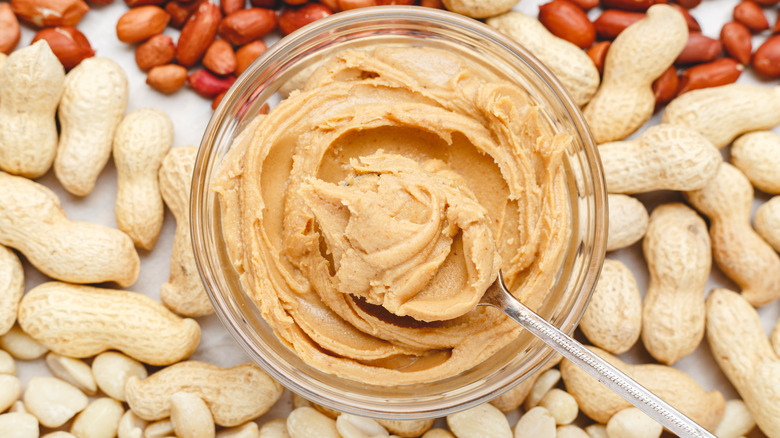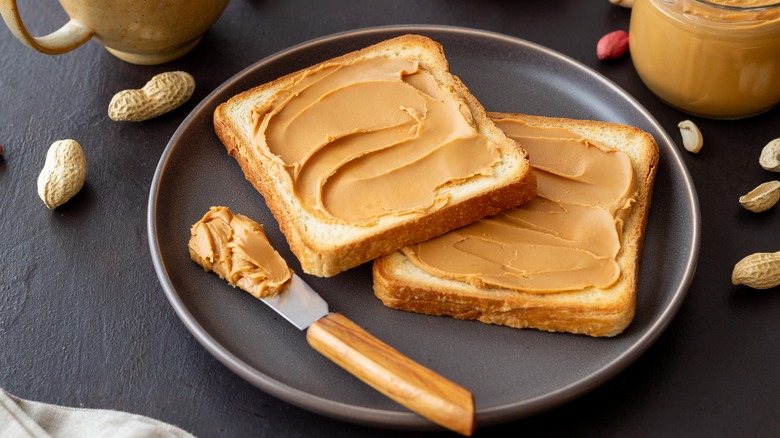Here's The Difference Between Peanut Butter And Peanut Butter Spread
Peanut butter is pretty simple, right? While shopping for peanut butter at the grocery store will usually give you dozens of brands and variations to choose from — organic, sweetened with honey, mixed with chocolate, mixed with jelly, crunchy, creamy — at the end of the day, peanut butter is still peanut butter. As the National Peanut Board explains, peanut butter is made via a very straightforward grinding process. It's typically made up of at least 90% peanuts, with extra ingredients including basic items like salt, sugar, and oil.
You should, however, look closely at that jar of peanut butter on the grocery store shelf before you take it home. Is it truly peanut butter? Turns out, if you take a second and actually examine the jars of so-called peanut butter in your average grocery store, you'll see that some aren't really peanut butter at all. Instead, they're labeled as "peanut butter spread." So what's a peanut butter spread and how does it differ from the straightforward and simplistic goodness of traditional peanut butter?
The difference comes down to the ingredient list
The difference between peanut butter and a peanut butter spread all comes down to the ingredients. The Florida Times-Union explains that oil is one ingredient that separates the peanut butters from the peanut butter spreads. Food scientist Bill Skinny told the publication that peanut butter must be made with hydrogenated or partially hydrogenated oil. However, spreads are not held to this requirement and can include other types of oils, such as palm oil.
Similarly, The Columbus Dispatch reported that the U.S. Food and Drug Administration dictates a certain ratio of peanuts and fat in all products that a brand might call "peanut butter." If this requirement isn't met, the product is considered a spread. The FDA says a true peanut butter must be made with at least 90% peanuts and a maximum 55% fat. U.S. Food & Drug Administration further states that these standards came about in the mid-1900s after a lengthy legal process intended to help consumers avoid "inferior peanut butters," particularly those produced on the cheap, with fewer overall peanuts and more oil.

